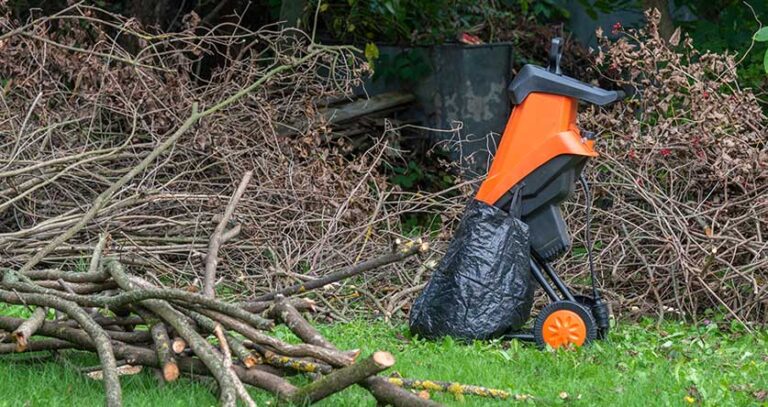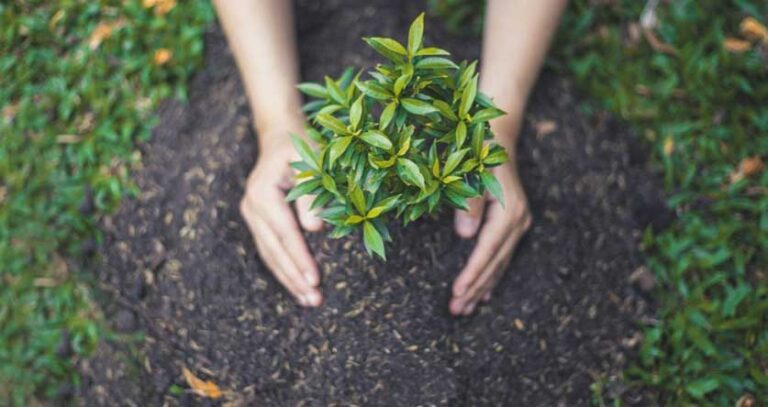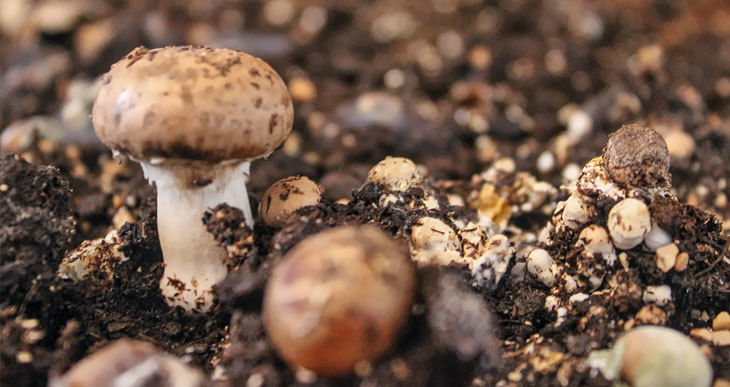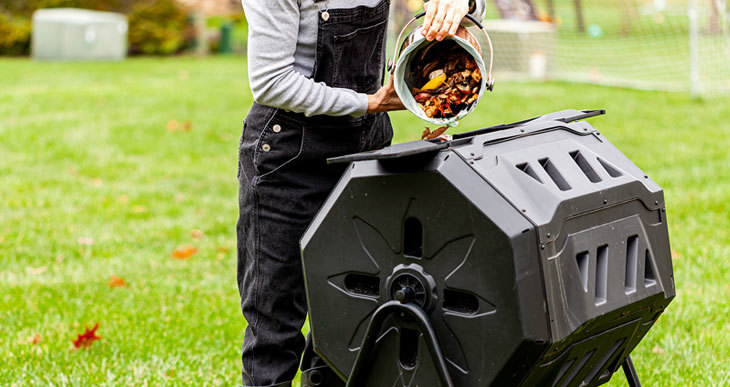Adding Compost To A Lawn (The Ultimate Secret!)
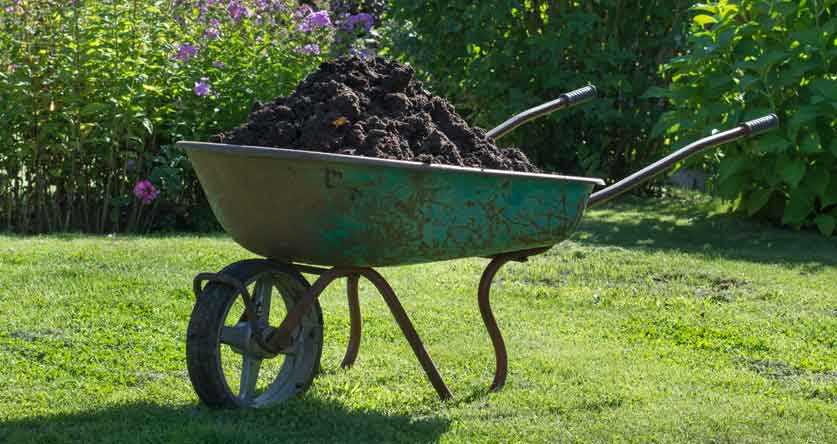
Is your garden lawn looking frazzled?
Want to make it your garden’s main attraction instead of the blemish it is now?
You don’t need powerful potions and powders. Instead, go back to basics and try something that’s been enhancing lawns for years and years: adding compost!
Compost isn’t a cutting-edge treatment, but it’s enough to give your lawn the edge!
Let’s look at what compost can do for your lawn.
How To Use Compost On Lawns
The best way to use compost on your lawn depends on your lawn’s stage of development.
For example, do you want to prepare the soil to grow a new lawn, fill out some patchy turf, or nourish an existing grass?
Whatever your objective, the following article will tell you everything you need to know about applying compost for successful grass growth!
Can You Use Compost On Your Lawn?
If you’re wondering whether compost is suitable for your grass, the answer is a resounding yes. Compost is a natural fertilizer with many benefits that help enhance lawns. It will benefit lawns at every stage of their life cycle, from seed to well-established turf.
This multitasking soil supplement improves grass in many ways, making it a lawn-care essential.
What Does Compost Do For Your Lawn?
If your lawn-maintenance program doesn’t include compost, your grass is missing out on all these benefits:
- Soil that holds on to enough water without becoming waterlogged.
- Good airflow.
- Plenty of organic matter.
- A flourishing microorganism community.
- Plant nutrients to boost growth.
These composting rewards can make your lawn grow faster, greener, fuller, healthier, and tougher. Plus, giving your yard a regular helping of compost can help it stay in peak condition even with less fertilizer and watering.
How Much Compost Do I Need For a Lawn?
Established lawns need a layer of compost only a 1/4 to 1/2 inch thick. Thicker layers can smother the grass and mess with its vital functions. This type of compost application is usually called a “top dressing.”
You can be more generous with compost when getting your soil ready to grow new grass. Work a 1- or 2-inch layer of compost into the top 4 to 6 inches of your soil before planting your grass seeds. Go for 1 inch if your soil is healthy-ish and 2 inches if it’s very sandy, heavy clay, or lacks organic matter.
Here’s how much compost you’ll need for existing and new lawns based on your lawn size.
How Much For Existing Lawns
This is how many cubic yards of compost you’ll need to have enough to apply a thin layer of compost to lawns of different sizes:
| Lawn Size | 1/4-Inch Compost Layer | 1/2-Inch Compost Layer |
| 1,000 square feet | 1 cubic yard | 2 cubic yards |
| 5,000 square feet | 4 cubic yards | 8 cubic yards |
| 10,000 square feet | 8 cubic yards | 15 cubic yards |
| 20,000 square feet | 15 cubic yards | 31 cubic yards |
How Much For New Lawns
Here’s how many cubic yards of compost you’ll need to work into your soil to get it ready to grow different-sized lawns:
| Lawn Size | 1-Inch Compost Layer | 2-Inch Compost Layer |
| 1,000 square feet | 3 cubic yards | 6 cubic yards |
| 5,000 square feet | 15 cubic yards | 31 cubic yards |
| 10,000 square feet | 31 cubic yards | 62 cubic yards |
| 20,000 square feet | 62 cubic yards | 123 cubic yards |
For Reseeding Lawns
You can do this calculation to figure out how much compost you’ll need for the bare spots where you want to reseed:
Multiply the length by the width of the area, then multiply the total by a third.
What Kind Of Compost Is Best For Lawns
Compost quality varies greatly depending on what went into the compost and how it was made. This checklist will help you find a high-quality compost for your lawn:
- Appearance. Similar to rich, dark topsoil.
- Texture. Fine, light, and crumbly.
- Smell. Pleasantly earthy with no hints of sourness or sulfur.
- pH. 6.0 to 8.0.
- Soluble salt concentration. Less than 6.
- Carbon-to-nitrogen ratio. Less than 30:1.
In compost, weed seeds, pesticide or herbicide residues, and large bits of partially decomposed matter are undesirable things to watch out for.
Using Screened Compost For Lawns
Fine textured compost works best for top dressing. Because you don’t want big lumps of the non-decomposed matter lying on your lawn! Use a compost sifter like this one to remove any large components from your homemade compost. (Amazon)
You’ll protect your lawn from potential harm by only choosing screened compost for topdressing.
Screened compost comprises fine particles that have passed through a 3/8-inch screen. These fine particles are essential for topdressing lawns because they’re small enough to nestle between blades of grass instead of smothering them.
You can safely work compost with slightly larger particles into your soil to enrich it before planting grass seeds.
What Is Lawn Compost
There isn’t only one type of compost that’s right for lawns. Any compost that ticks all the above boxes can be suitable for your yard. However, make sure that you use well-finished, mature compost! Immature compost can cause damage to your lawn because it locks up all the available nitrogen to continue decomposing the unfinished organic matter in the compost.
If you’re buying compost in bags, look for the certified compost with the STA (seal of testing assurance) label. This test was developed by the Us Composting Council and is one of the only programs that gives you this kind of assurance.

You’ll find a list of STA compost participants here.
Homemade Vs. Store-Bought
The compost you’ve made yourself and compost from a store both have ups and downsides.
Store-bought compost’s main advantage is that it can be scientifically formulated to make lawns lush. On the flip side, readymade compost can be high in fillers like sawdust and lack a variety of organic wastes and microorganisms.
And these natural bacteria and microbes are essential for soil health!
Your homemade compost might not be as robust as some wonder composts on the market, but at least you can control what goes into it. You can make it from an assortment of organic wastes and keep it chemical-free. Bonus: Bacteria and fungi flourish in your backyard compost!
If you haven’t started home composting, learn how to choose the proper compost bin for your needs in this article.
What about Compost Pellets?
Take compost, squash it into little rounded shapes, and you’ve got compost pellets!
These pellets are easier and quicker to apply than standard compost. In addition, they can be made from plant matter or manure (exciting news for gardeners who’d prefer not to handle manure in its natural form).
Topsoil Vs. Compost For Lawns
Although you can use topsoil or compost for topdressing your lawn, compost should usually be your go-to. Compost is better at improving soil quality to enhance lawn health.
An exception is when you want to level your lawn. Topsoil does this particular job more effectively than compost.
When To Add Compost To Lawns
Schedule your lawn’s topdressing application for its growing season every year. You can do this a couple of times a year once you have a regular schedule.
You can top dress grass with compost anytime, but avoid it when the ground is frozen. Adding compost after aerating the lawn will provide even better results. And when seeding your turf, add compost at the same time.
If you have a large garden, compost spreaders like this one are a fantastic time-saving tool! (Amazon)
Your soil condition will improve yearly, and your lawn will get more compliments!
How To Apply Compost To Your Lawn
If you follow the simple steps below, you’ll find adding compost to grass far easier. Applying compost to your lawn can sometimes seem daunting, but this method makes it more doable.
Here are simplified steps for topdressing lawn:
- Step #1: Mow your lawn and remove debris like clippings and leaves.
- Step #2: Sprinkle grass seeds on bare patches.
- Step #3: Using a shovel, fling compost around, trying to spread it evenly over your entire lawn. For large surfaces, use a special compost spreader as described above.
- Step #4: Lightly rake the compost to even it out, aiming to cover all areas in a layer 1/4 to 1/2 an inch thick.
- Step #5: Water the area to help the compost settle or let it settle on its own.
How To Spread Compost On A Large Lawn
Lawns with a large surface area need a better piece of equipment than a simple spade.
Mechanical topdressing spreader machines like this have a few advantages. First, they save a considerable amount of time. But they also prevent large clumps or unfinished compost ingredients from finding their way onto the grass. You can also use them to make up mixes of compost and seed for reseeding a lawn.
These machines do all the heavy lifting but are a bit pricey.
If you’re lucky, you can rent these machines or hire someone to do your topdressing 🙂


